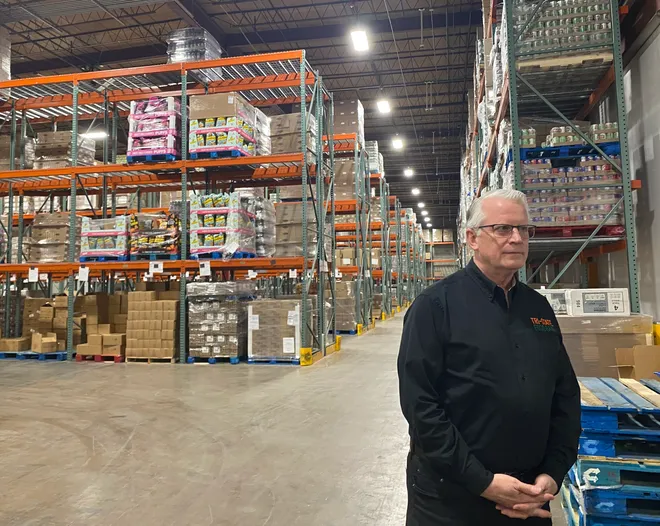Tri-State Food Bank Funding Cuts It feeds families, children, seniors, and struggling workers alike. But now, a growing crisis looms: critical funding cuts are threatening the very foundation of its services. As support dwindles, the food bank is being forced to make tough decisions: reducing supplies, scaling back services, and turning away those in need.
This isn’t just about numbers on a balance sheet—it’s about real people losing access to basic nutrition. If you’ve ever wondered how local policies or budget shifts ripple into households, here’s a firsthand look into how reduced funding is rewriting the story of hunger relief.
Introduction: Why This Crisis Deserves Your Attention
The Role of the Tri-State Food Bank
The Tri-State Food Bank has long been a pillar of support for those living in poverty or on the edge of financial stability. Serving over 33 counties across Indiana, Illinois, and Kentucky, this organization distributes millions of pounds of food annually through its vast network of partner agencies—pantries, soup kitchens, shelters, and schools.
Their mission isn’t just about feeding people—it’s about fighting hunger with dignity. They provide everything from backpacks full of weekend meals for children, to emergency food boxes for seniors, to mobile pantry units that reach rural or underserved neighborhoods. Every item they give away is a lifeline, every truck that rolls out is hope on wheels.
Recent Developments in Funding Reductions
However, the Tri-State Food Bank is now grappling with a series of deep funding cuts. These include reductions in federal support through programs like TEFAP (The Emergency Food Assistance Program), state-level budget reallocations, and a decline in private donations and corporate sponsorships.
The reasons vary, but the results are painfully clear: less food to distribute, fewer services available, and a community bracing for a hunger surge. These cuts couldn’t come at a worse time—post-pandemic inflation, higher grocery prices, and job instability have already left many families vulnerable. The food bank is being forced to make impossible choices, rationing help where demand is soaring.
The Impact of Funding Cuts on Local Communities
Rising Food Insecurity Across the Tri-State Region
Food insecurity isn’t just a statistic—it’s a child going to school hungry, a parent skipping meals so their kids can eat, or a senior choosing between groceries and medicine. And across the Tri-State area, these stories are becoming more common.
According to recent estimates, over 1 in 6 families in the region are experiencing some level of food insecurity. That number is climbing as food prices outpace wage growth, and social safety nets get tighter. The Tri-State Food Bank, once able to meet the rising need, now finds itself struggling to keep up.
Food pantries report longer lines, mobile distributions are running out of supplies faster, and schools are seeing more students come to class hungry. The painful reality is that every dollar cut from funding equals fewer meals on tables—and that impact is both immediate and devastating.
Programs Being Scaled Back or Eliminated
The ripple effects of reduced funding are showing up everywhere:
-
Weekend backpack programs for children have been scaled back in some districts due to a lack of resources.
-
Mobile food pantries, which serve remote or rural areas, are seeing reduced trips or limited inventory.
-
Fresh produce and protein options are being replaced with more shelf-stable, processed items due to cost constraints.
-
Senior delivery services—vital for homebound elderly—have seen route cutbacks and delayed deliveries.
What’s worse is that these cuts often target the most vulnerable. It’s not just food banks hurting—it’s families wondering where their next meal will come from.
Who Is Most Affected by the Funding Cuts?
Children and School Meal Programs
Children suffer disproportionately in food crises. They’re growing, learning, and developing—and hunger can impact all of that. With cuts to the food bank’s child-focused programs, more schools are reporting an uptick in students arriving to class hungry, or skipping lunch altogether when school food service budgets fall short.
The popular backpack program, which sends kids home with meals for the weekend, has had to reduce the number of schools served. That means kids are going 48+ hours without reliable nutrition, a fact that affects their academic performance, energy levels, and overall health.
Seniors and Fixed-Income Families
Another hard-hit group is seniors—particularly those living on fixed incomes. With inflation outpacing retirement checks, many elderly individuals rely on monthly food boxes or delivery services provided by the food bank. Cuts to these programs mean longer waits, fewer visits, and sometimes no food delivery at all.
Fixed-income families—often working poor or disabled—also feel the squeeze. They’re already stretching every dollar. When food assistance shrinks, they’re forced to make impossible choices: pay the rent or buy groceries, fill a prescription or fill the pantry.
Behind the Cuts: Why Is Funding Being Reduced?
Government Budget Decisions
Much of the funding for food banks comes through federal and state grants—and when these are reduced or reallocated, organizations like Tri-State are left scrambling. Programs like TEFAP and SNAP-Education have seen reduced allocations as government bodies focus on deficit reduction or shift funding to other areas.
These policy changes are often made far from the communities they affect—but their consequences land hard at home. The Tri-State Food Bank is left to fill the gaps with fewer resources and more people in need.
Decline in Donations and Grant Money
The pandemic led to a temporary surge in donations as awareness of food insecurity spiked. But as the crisis faded from headlines, so did the influx of funds. Many corporate sponsors scaled back, private donors shifted focus, and grant money has become increasingly competitive.
This double hit—less government aid and fewer private donations—has created a perfect storm. Even as operational costs rise (fuel, warehouse storage, food purchasing), the funds needed to sustain the food bank’s services are shrinking rapidly.


